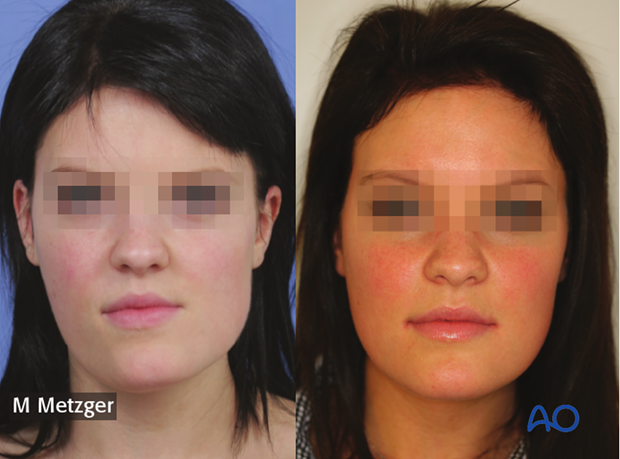Asymmetry
1. Introduction
In one-jaw surgery the position of the non-osteotomized jaw will dictate the final position of the jaw that is being moved. In this case computer assisted planning will normally not be performed.
However, in bimaxillary surgery the position of both jaws can be changed in all three dimensions. In these cases computer assisted planning has proven to be a valid alternative to dental model surgery.
As all bony structures can be evaluated in computer assisted planning. It is an invaluable tool when dealing with facial asymmetries involving the ramus and condyle. Furthermore, since soft tissues can be included in the virtual model, midline adjustments can be performed more accurately than with the use of plaster casts.
However, reproduction of the virtual planning in the operating room will require a digital workflow including CAD-Cam, splint fabrication or patient specific plates and cutting guides.
We will demonstrate the planning of a case presenting with facial asymmetry caused by condylar hyperplasia. The condyle is still growing.
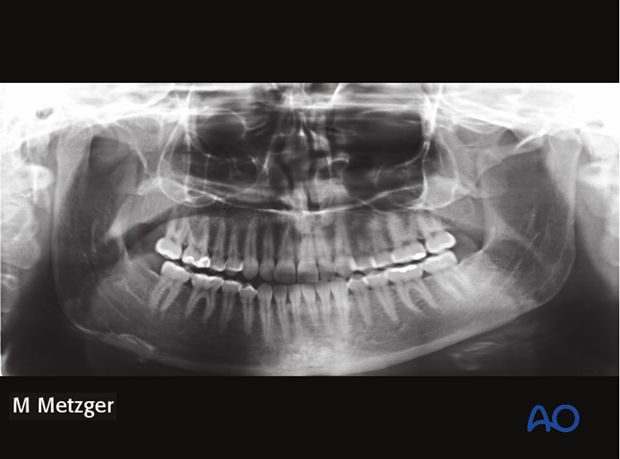
Useful additional reading
2. Data acquisition
CT/CBCT acquisition
For the virtual planning a CT scan and/or cone beam CT data is imported into the planning software. Slice thickness less than 1.0 mm is recommended.
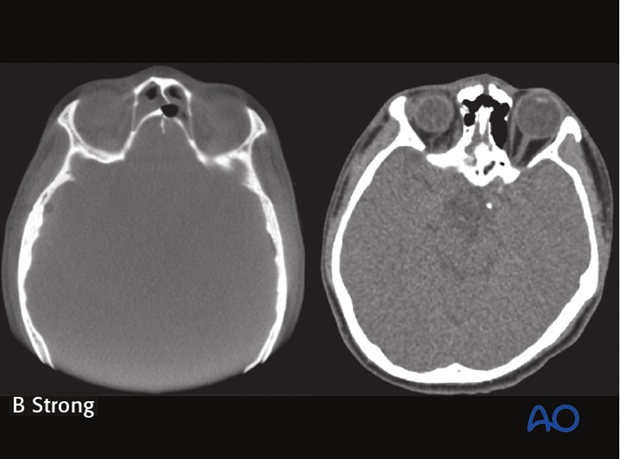
The CT scan data may be used for soft tissue simulations.
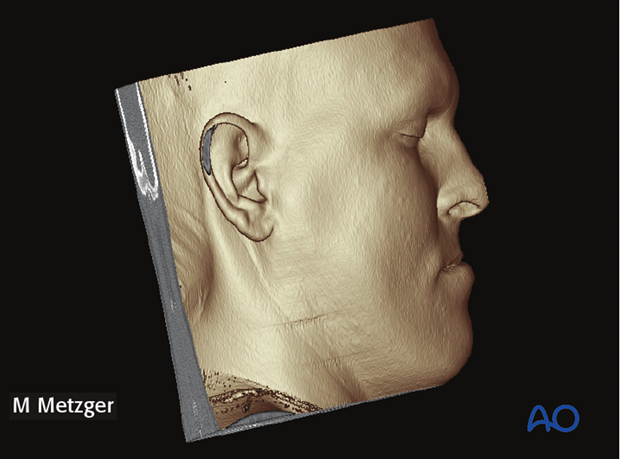
Scan of the dentition
CT scans produce artifacts around the teeth due to dental restorations and orthodontic appliances. Therefore, a high resolution scan of the teeth is not possible from the CT scan.
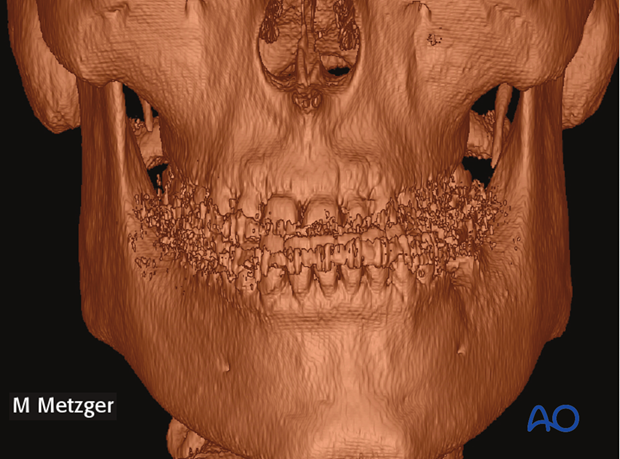
A surface scan of the dentition can either be made from plaster models using a CT scanner, optical scanner.
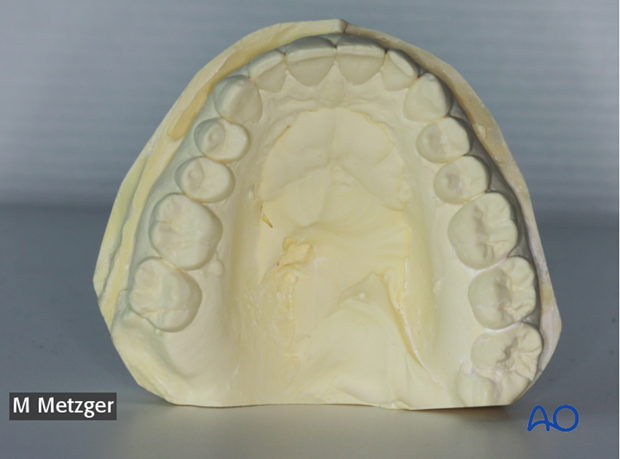
Alternatively, the dental arch can be scanned using an intraoral scanner.
Note: Scans of the dentition should not be more than one month old due to potential tooth movement.
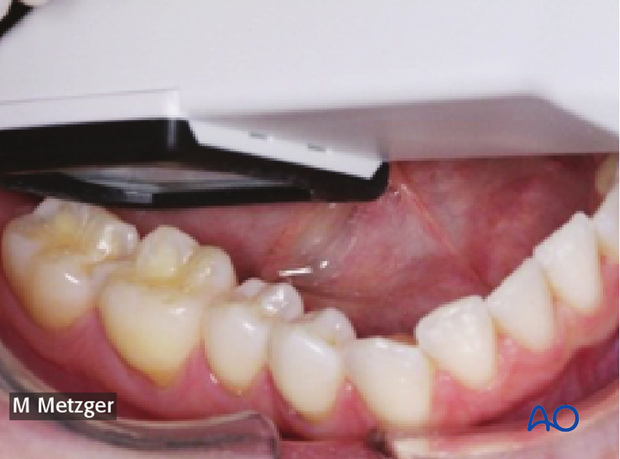
The scans are made of the maxilla and mandible separately as well as in occlusion. Examples of the virtual tooth surface obtained from the scan can be seen on the left.
Note: The scan of the dentition in final occlusion is made either by repositioning the dental arches virtually or scanning the plaster casts in final occlusion (with or without segmental surgery).
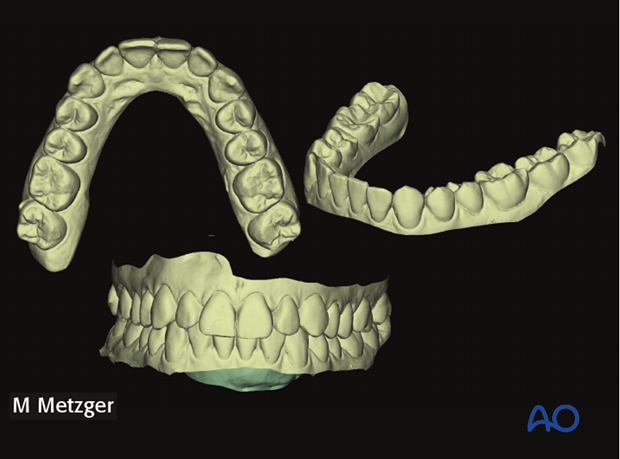
3. Data processing
Data alignment
The patients' virtual skull must be oriented in space to approximate natural head position.
To find the mid sagittal plane, it is important to align the coordinate planes. The alignment can be performed in the following way.
To start the alignment, the center point of the coordination system is placed at nasion.
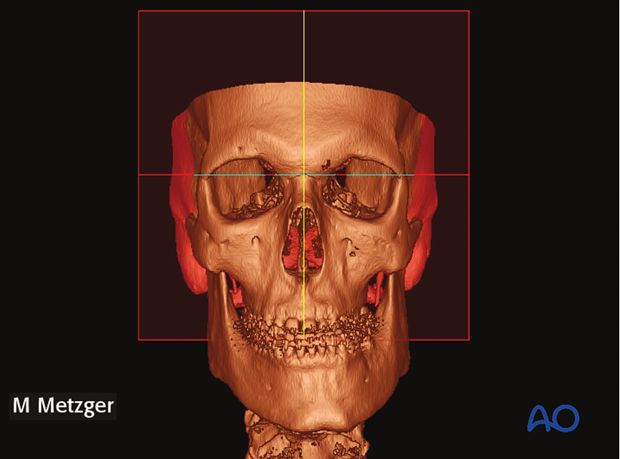
The coronal and transversal adjustment is performed using the lateral aspects of the orbital cavity and the the skull base as reference points.
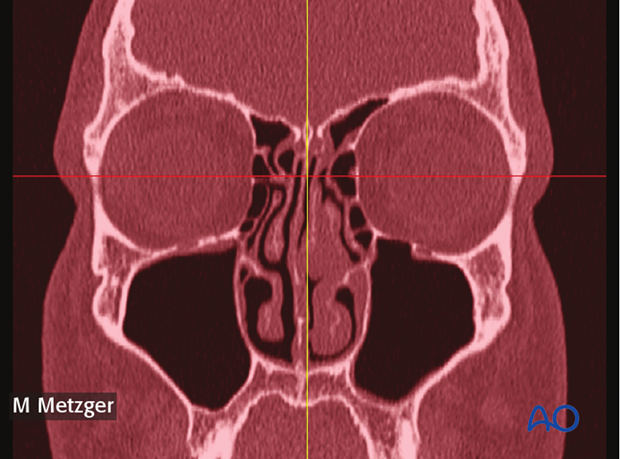
Finally the sagittal adjustment is made by using the Frankfurt horizontal plane bilaterally.
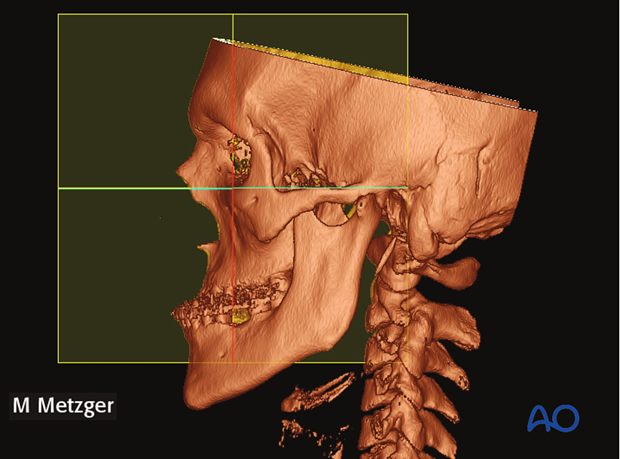
This case presents with condylar hyperplasia on the right side that also affects the maxilla.
Right side view.

Left side view.
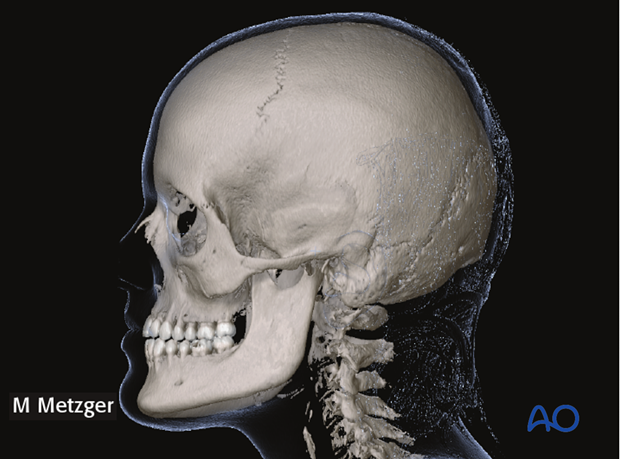
Frontal view.
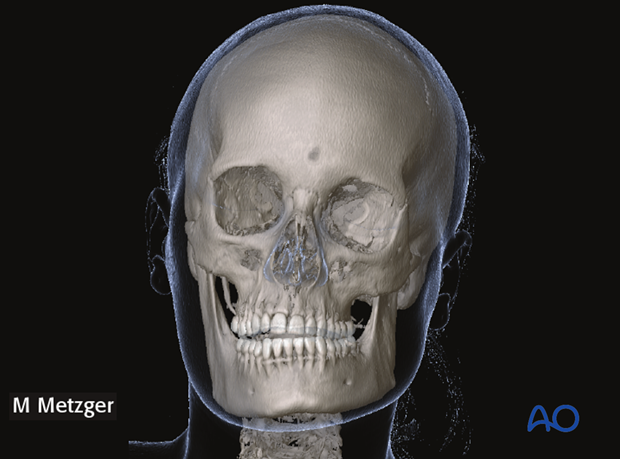
Segmentation
Clinical picture of the occlusion.
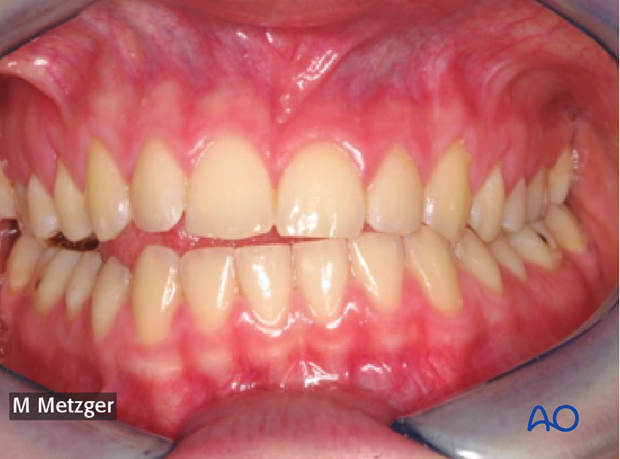
Segmentation
For the upper and lower jaws, segmentation is performed using conventional osteotomy lines. In this case a Le Fort I osteotomy, a bilateral sagittal split osteotomy (BSSO), and a condylectomy are planned.
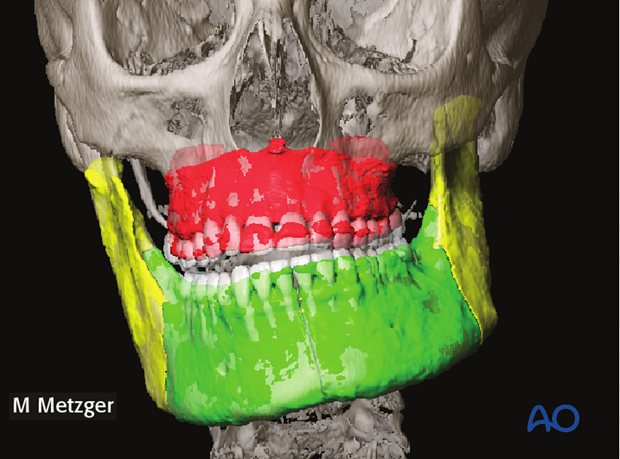
Data fusion
Optical scans of the occlusal surfaces can be fused into the CT dataset at this point or at a later stage, prior to preparing the occlusal splints.
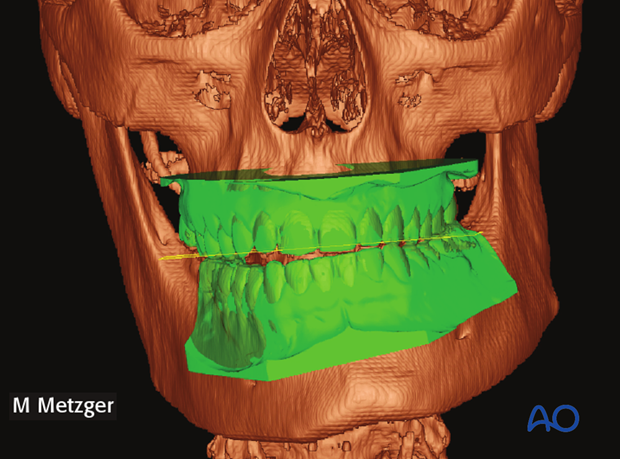
4. Virtual maxillary correction
Virtual repositioning
The occlusal cant is determined by tracing a line between the maxillary molars (blue line) and comparing it to the horizontal reference line (yellow)
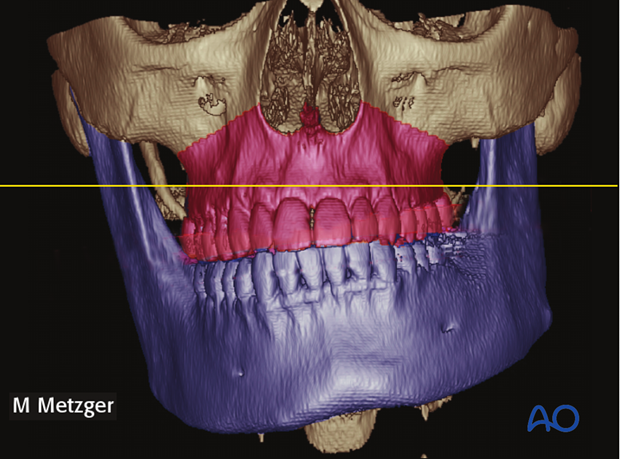
In the frontal view, the midline symmetry is evaluated.
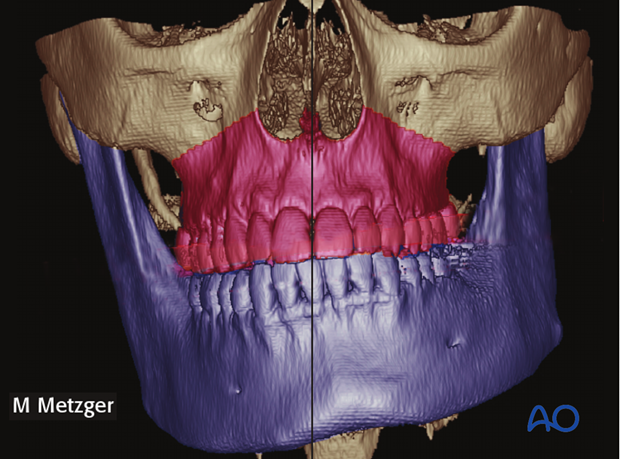
In this case a clockwise rotation of the maxilla around the midpoint is necessary to correct the occlusal cant.
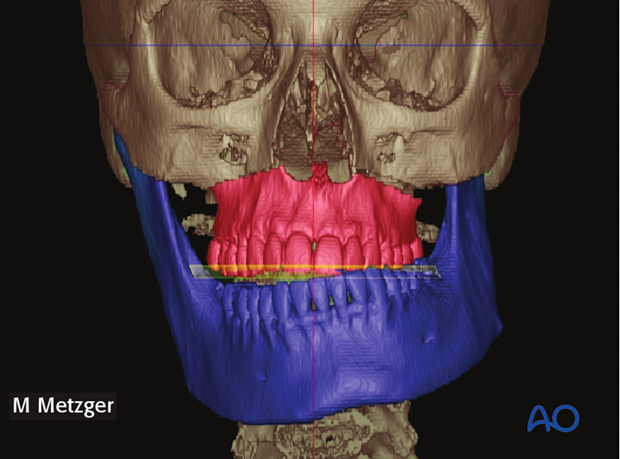
The surface scans of the dentition (green – maxilla; red - mandible) are then imported into the CT data set to overlay the existing teeth.

Preparation of intermediate occlusal splint
To allow for the preparation of the intermediate occlusal splint, the mandible is rotated open using the intercondylar axis.
A virtual intermediate splint can now be designed to relate the operated maxilla to the non-operated mandible.
The intermediate splint is then produced using a 3D-printer.
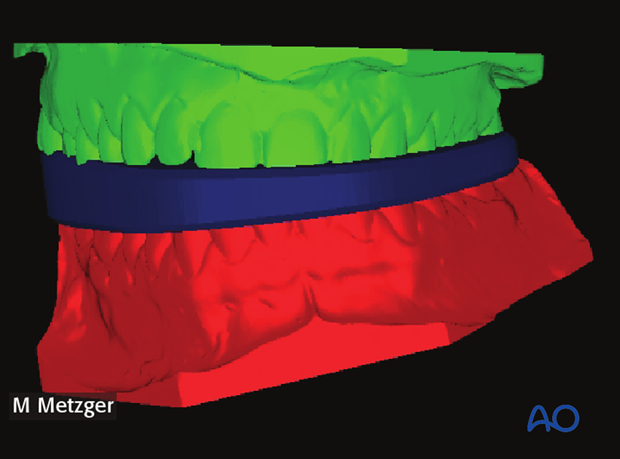
5. Virtual mandibular correction
Planning of condylectomy
The data from the surface scan with teeth in the final occlusion is now imported and overlaid to the final position of the maxilla, establishing the position of the distal segment of the mandible.

The data from the surface scan with teeth in the final occlusion is now imported and overlaid to the final position of the maxilla, establishing the position of the distal segment of the mandible.
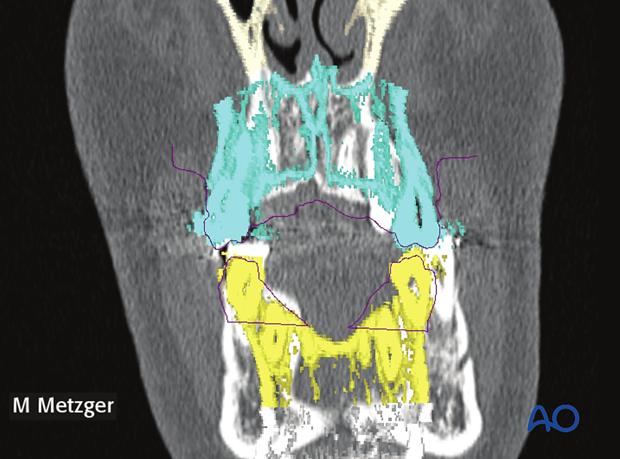
The data from the surface scan with teeth in the final occlusion is now imported and overlaid to the final position of the maxilla, establishing the position of the distal segment of the mandible.
A final occlusal splint was not necessary in this case.

6. Case
The picture to the left shows the removed condylar head (condylectomy).

Clinical pre- and post-operative pictures
Clinical pre- and post-operative pictures are shown on the left.
